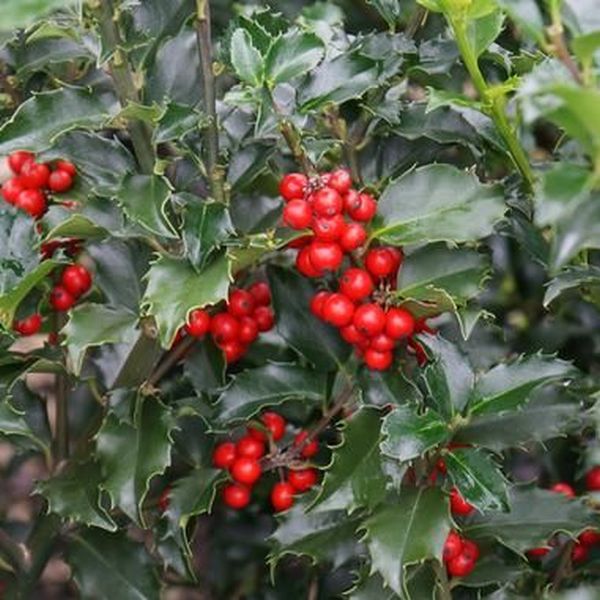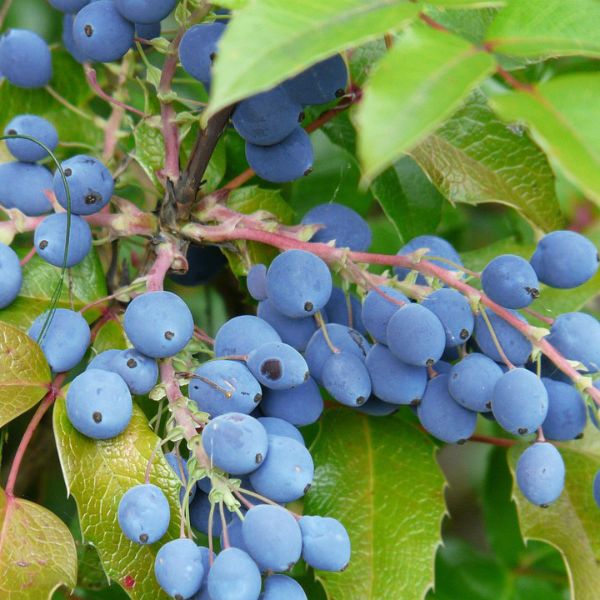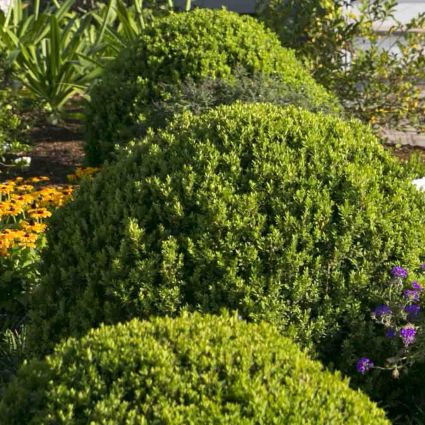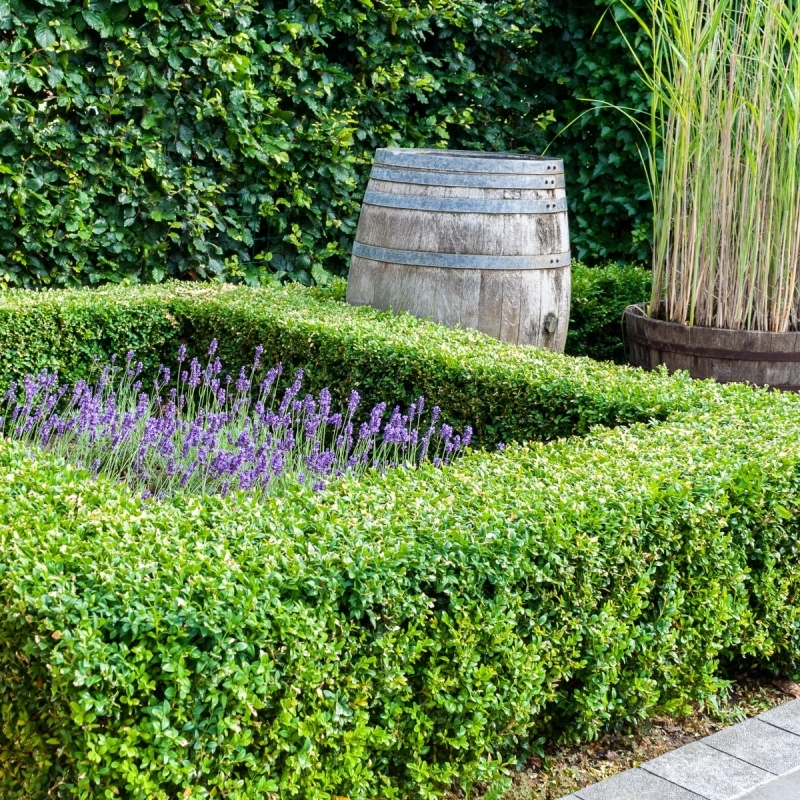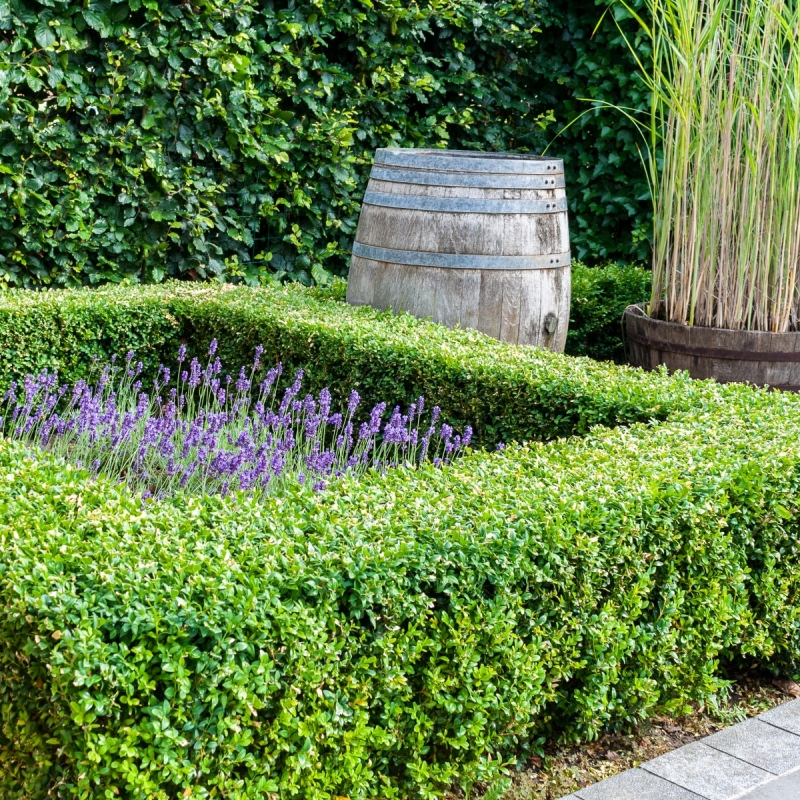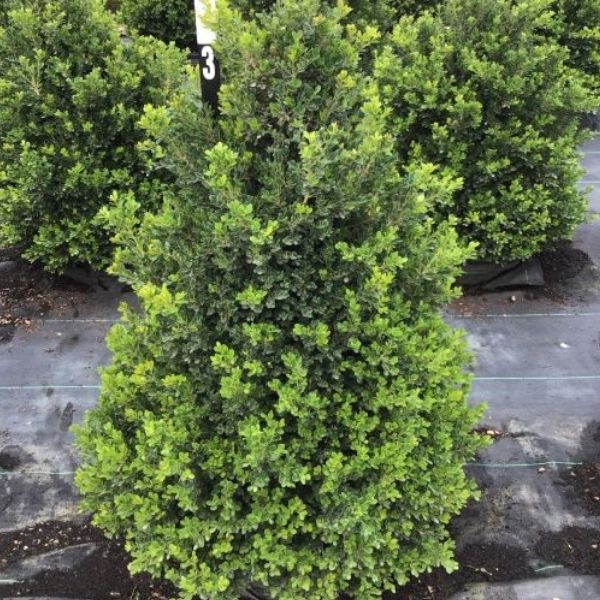





Goshiki False Holly
Osmanthus heterophyllus 'Goshiki'
9 reviews
Goshiki False Holly
Osmanthus heterophyllus 'Goshiki'
9 reviews
- Beautiful variegated foliage adds interest to any landscape
- Tolerant of a variety of soil types and conditions
- Low maintenance and easy to care for
- Recommended by landscape designers for optimal fit in real yards
$86.00
$123.00
30% Off
- Ships to 43215 in 3 to 7 days
- Free Shipping Over $150
- Plant Arrival Guarantee
- In Stock
- Free Plant Consult
$200 - Landscape-Approved: Every Plant We Sell Comes With Design Expertise Behind It
1.5 Gallon
Not just beautiful - intentionally selected by ShrubHub's 3D landscape design team to fit real-world spaces and maximize yard potential.
Why Goshiki False Holly?
Goshiki False Holly is a highly desirable ornamental shrub distinguished by its evergreen foliage that blooms spectacularly in autumn. Its lush leaves display an array of colors, including cream, yellow, bronze, orange, and dark green, which make it perfect for adding color and texture to any garden. Additionally, its compact form and low maintenance requirements make it an ideal choice for landscape design.
People who loved this plant also bought
Sunlight
Goshiki False Holly requires partial to full sunlight.
Watering
Goshiki False Holly has moderate watering requirements. It needs regular watering, preferably once or twice a week, ensuring the soil remains evenly moist but not waterlogged. It is important to allow the top inch of soil to dry out slightly between wateri
Fertilizing
Goshiki False Holly typically requires a balanced, slow-release fertilizer applied in early spring. It is important to follow the manufacturer's instructions for the specific fertilizer used, to ensure the appropriate nutrient levels for optimal growth and
The Magnificent Goshiki False Holly: A True Showstopper for Your Garden!
Looking to add a touch of elegance and all-season interest to your landscape? Look no further than the captivating Goshiki False Holly.
With its swirling speckled multi-colored variegated leaves and traditional holly leaf shape, this broad-leaved evergreen is a true standout that will leave your garden brimming with beauty.
Whether it's the shades of green, cream, yellow, or even touches of pink, this shrub's variegated leaves are an ever-changing canvas of natural artistry.
But the Goshiki False Holly offers more than just remarkable foliage. With its tall, uniform fine-textured form, it serves as a fantastic accent or specimen plant in your garden.
Create hedges for privacy and screening, or let it shine as a striking focal point.
While the Goshiki False Holly is known for its foliage, it also surprises with its tiny white flowers. These delicate blooms appear in late season, providing a valuable nectar source for pollinators.
What's more, the late-season fragrance adds another layer of sensory delight to your outdoor space.
And here's the best part: No messy fruit! Enjoy the beauty and fragrance without worrying about clean-up.
It thrives in partial shade in warm climates or full sun in cooler zones, adapting to various growing conditions. This evergreen beauty has moderate moisture needs and prefers acidic well-drained soil.
As for maintenance, simply prune after flowering to maintain its desired shape.
One of the greatest advantages of the Goshiki False Holly is its resilience. It is pest and disease-free, allowing you to enjoy its splendor without worry.
Additionally, deer don't prefer it, making it an excellent choice for gardens frequented by these creatures.
Don't miss the opportunity to invite the Goshiki False Holly into your garden.
Visit our Shrub Hub store today and make the Goshiki False Holly the crowning jewel of your landscape. Order now and let the beauty unfold!
Plant Information:
| Botanical Name: | Osmanthus heterophyllus 'Goshiki' |
| USDA Zones: | 6 - 9 |
| Water: | Moderate |
| Exposure: | Full Sun |
| Soil Needs: | Widely Adaptable |
| Mature Height: | 6 - 8 feet |
| Mature Spread: | 4 feet |





Pollination Info
Pollination Information for Goshiki False Holly (Osmanthus heterophyllus 'Goshiki')
Plant Description
Goshiki False Holly, also known as Osmanthus heterophyllus 'Goshiki', is an evergreen shrub that typically grows to be 6-10 feet tall and 4-6 feet wide. Its leaves are variegated, with shades of cream, yellow, and green, and have a holly-like appearance, though it is not a true holly plant.
Pollination
Being an ornamental shrub, Goshiki False Holly is not known for producing fruit or seeds. Furthermore, most varieties of Osmanthus are dioecious, meaning there are separate male and female plants. This means that cross-pollination is required for fruit production. However, even if male and female plants are present, fruit production may still be minimal as Osmanthus does not generally attract pollinators such as bees or butterflies.
Cultivation
Goshiki False Holly is a low-maintenance plant that tolerates a range of soil types and growing conditions. It does best in well-draining soil with moderate moisture. As it is not a true holly, it is not fussy about soil pH, and can tolerate anything from slightly acidic to slightly alkaline soil conditions. It grows best in full sun to partial shade, but can also tolerate full shade.
Conclusion
Overall, Goshiki False Holly is not known for its pollination or fruit production. It is primarily grown for its ornamental value, with its variegated leaves providing year-round interest in the garden. If fruit production is desired, male and female plants should be grown together and hand-pollination may be needed to ensure successful fertilization.
FAQ
Goshiki False Holly (Osmanthus heterophyllus 'Goshiki') FAQs
What is Goshiki False Holly?
Goshiki False Holly (Osmanthus heterophyllus 'Goshiki') is a small to medium-sized evergreen shrub that is known for its strikingly variegated foliage. Its leaves are dark green, splashed with shades of cream, pink, and orange. It is also known as Variegated False Holly or Holly Tea Olive.
Where does Goshiki False Holly originate from?
Goshiki False Holly is native to Japan, Taiwan, and China.
How big does Goshiki False Holly grow?
Goshiki False Holly can grow up to 10 feet tall and 8 feet wide, but it is usually kept smaller through pruning. Young plants can be slow growing but can eventually pick up speed.
What are Goshiki False Holly's care requirements?
- Light: Plant in partial shade to full sun conditions.
- Water: Water the plant regularly to keep soil moist, but not waterlogged.
- Soil: Goshiki False Holly prefers well-drained soils with a slightly acidic pH of 5.5 to 6.5.
- Fertilizer: Apply a balanced fertilizer like 10-10-10 during the growing season.
- Pruning: Prune in late winter or early spring before new growth emerges. Remove dead, damaged, or diseased wood, and shape the plant as desired.
What other interesting facts should I know about Goshiki False Holly?
- The flowers are small and inconspicuous and release a pleasant fragrance that smells like apricot, jasmine, or orange blossom.
- The berries that form after flowering contain one or two seeds and are not edible for humans but are eaten by birds.
- The plant is deer-resistant, making it a good option for gardens frequented by deer.
Planting & Care
Planting & Care for Goshiki False Holly (Osmanthus heterophyllus 'Goshiki')
Goshiki False Holly is a versatile and attractive shrub that can be grown in a variety of conditions. Here are the steps you need to follow for successful planting and care of this plant:
Planting
Choose a location: Goshiki False Holly grows best in well-draining soil with full to partial sun exposure. It can tolerate a range of soil types, but prefers slightly acidic soil with a pH between 5.5 and 6.5. Choose a spot that is protected from strong winds and has enough space to accommodate the plant's mature size.
Prepare the soil: Goshiki False Holly prefers well-draining soil. If your soil is clay-heavy or poorly-draining, you can amend it with compost or organic matter to improve drainage. Dig a hole that is twice as wide as the root ball of the plant and slightly shallower than the root ball.
Plant the shrub: Place the plant in the hole and backfill with soil, gently tamping it down to remove air pockets. Water thoroughly after planting.
Care
Watering: Goshiki False Holly requires regular watering, especially during its first growing season. Keep soil consistently moist, but not waterlogged. Reduce watering once the plant is established and can tolerate some dryness.
Fertilizing: Apply a balanced fertilizer in early spring to promote healthy growth. You can also use a slow-release fertilizer that will release nutrients slowly over time.
Pruning: Prune Goshiki False Holly in late winter or early spring to maintain its shape and remove any dead or damaged growth. You can also prune for size control if needed.
Pests and Diseases: Goshiki False Holly is generally resistant to pests and diseases. However, it can be susceptible to root rot in poorly-draining soil. Avoid overwatering and provide proper drainage to prevent this.
Propagation: Goshiki False Holly can be propagated through seeds or cuttings. Collect seeds in the fall and plant immediately. Take stem cuttings in summer or early fall, dip them in rooting hormone, and plant in moist soil or water until roots develop.
With proper planting and care, Goshiki False Holly can be a beautiful and long-lived addition to your garden or landscape.
Check Out These Verified Customer Reviews:
Customer Reviews
4.7 out of 5 based on 9 reviews
Thank you! Your review has been submitted.
Beautiful false holly plant
High quality and realistic
Great condition upon arrival
Item has been added to your cart.





